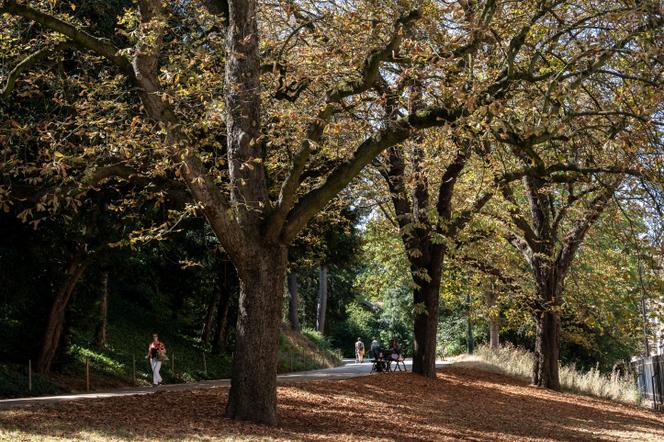


Dead leaves piling up, scorched canopies: In some regions, the landscape has taken on a premature autumnal appearance. Nathalie Bréda, research director at the French National Research Institute for Agriculture, Food and Environment and a specialist in tree functioning and forest dieback, explains the causes and consequences of this phenomenon.
There are currently two phenomena, which should not be confused, occurring at the same time: foliage changing color with unusual hues for the season, and the premature shedding of leaves. Several factors can explain the color change, and some have nothing to do with heat or drought. For instance, among chestnut trees found in cities, the reason they turn brown so early is not related to the climate but to an insect: A caterpillar known as the horse chestnut leaf miner develops inside the leaves, creating tunnels that cause the leaves to dry out. This visible phenomenon, which has been common for several years, can alarm residents.
Another cause is excessive sunlight during prolonged periods of high pressure and clear days. Direct sunlight stresses the foliage, prompting it to adjust its pigment composition: The abundant green chlorophyll pigments break down, revealing other pigments – reds and oranges – that protect the leaves from ultraviolet radiation. At the moment, trees growing at the forest edge − that is, those most exposed to the sun − are changing color the most.
You have 70.56% of this article left to read. The rest is for subscribers only.
